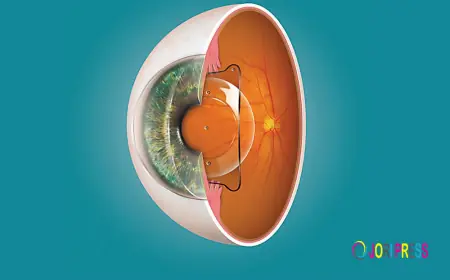Derma Pen vs. Other Microneedling Tools: Pros and Cons

Microneedling has become one of the most popular skin treatments for achieving smoother, firmer, and youthful skin. With various tools available in the market, choosing the right device can be a challenge. Among these, the Derma pen stands out as one of the most advanced and widely preferred microneedling devices. This blog will explore the differences between the Derma pen and other microneedling tools, discussing their pros and cons to help you make an informed decision.
Introduction to Microneedling Tools
Microneedling involves creating tiny punctures on the skin's surface to stimulate collagen production and promote skin renewal. The primary tools used include rollers, stamping devices, and pens. Each tool aims to enhance skin texture, reduce scars, and combat signs of aging but differs in design, precision, and overall effectiveness.
What is the Derma Pen?
The Derma pen is a motorized microneedling device designed for precision and control. It uses a cluster of fine needles that move vertically into the skin, adjusting speed and depth automatically or manually. Unlike traditional manual rollers, the Derma pen allows for uniform punctures and reaches difficult skin areas more effectively. Because of its versatility and safety profile, it has become a favorite among skincare professionals and enthusiasts alike.
How Does the Derma Pen Differ From Other Microneedling Tools?
When compared with manual rollers and stamping devices, the Derma pen offers several distinct advantages:
-
Precision: The vertical needle movement of the Derma pen reduces skin trauma and provides even penetration.
-
Adjustability: Needle depth and speed can be customized to suit different skin types and conditions.
-
Hygiene: The pen uses disposable needle cartridges, which minimize the risk of infection.
Other microneedling tools, such as rollers, often use fixed needles and horizontal pressure, increasing discomfort and skin abrasion.
Pros of Using the Derma Pen
1. Superior Accuracy and Safety
The Derma pen’s motorized action ensures consistent needle penetration with minimal skin damage, reducing redness and irritation. This makes it especially suitable for sensitive skin and delicate areas like under the eyes or around the nose.
2. Customizable Treatment
You can adjust the needle depth on the Derma pen based on your skin’s needs. Shallower depths are ideal for enhancing topical product absorption, while deeper settings help with acne scars and wrinkles. This versatility boosts its appeal for various skin concerns.
3. Less Pain and Faster Recovery
Thanks to its vertical motion and precise control, many users report less discomfort during treatment compared to dermarollers. Healing time also tends to be quicker, enabling faster return to daily activities.
Cons of Using the Derma Pen
1. Requires Skill and Experience
While the Derma pen is effective, improper use can lead to skin damage or uneven treatment results. It’s recommended that beginners seek professional guidance or undergo proper training before DIY use.
2. Higher Initial Cost
The technology and disposable cartridges make the Derma pen more expensive upfront compared to simple rollers. However, considering its durability and hygiene benefits, many find the investment worthwhile.
Pros and Cons of Other Microneedling Tools
Manual Dermarollers
Pros:
-
Affordable and easy to use at home
-
Can cover large surface areas quickly
-
Available in many needle lengths
Cons:
-
Less precision, causing potential skin trauma
-
Horizontal rolling motion can aggravate sensitive skin
-
Difficult to reach contour areas like under eyes or around the nose
Stamp Microneedling Devices
Pros:
-
Controlled puncture depth and area
-
Less risk of skin injury than rollers
Cons:
-
Slower treatment process
-
Requires repeated stamping for full coverage, increasing discomfort
-
Less commonly used and available
Which Tool is Better for Your Skin Needs?
Choosing the right microneedling device depends on your skin concerns, pain tolerance, and usage goals.
-
For targeted, precise treatment of scars, wrinkles, and sensitive areas, the Derma pen is highly recommended.
-
If you prefer a budget-friendly, general at-home treatment for mild skin texture improvement, a dermaroller might suffice.
-
For those seeking a compromise between precision and ease of use, stamp devices can be an option but are less common.
How to Maximize Results With Any Microneedling Tool
Regardless of the device, the effectiveness of microneedling depends on correct technique, proper skin preparation, and aftercare. Applying serums with active ingredients like hyaluronic acid or vitamin C post-treatment can accelerate healing and enhance glow. Avoid excessive sun exposure and wear sunscreen diligently to protect newly treated skin.
Conclusion
The Derma pen is a state-of-the-art microneedling tool that offers precision, safety, and customizable treatment advantages over traditional rollers and stampers. While it may require a higher initial investment and some learning curve, its benefits in reducing skin trauma, improving results, and accelerating recovery make it a preferred choice for many skincare enthusiasts. Understanding your unique skin needs and treatment goals will guide you towards the best microneedling tool for glowing, healthy skin.
FAQs
Q1: How does microneedling with a Derma pen improve collagen production?
Microneedling creates controlled micro-injuries that signal the skin to repair itself by producing collagen and elastin, leading to firmer and smoother skin over time.
Q2: Is the Derma pen suitable for all skin types?
Yes, the Derma pen can be adjusted to suit most skin types, including sensitive and acne-prone skin, though consultation with a professional is advisable for severe conditions.
Q3: What makes the Derma pen safer than dermarollers?
The Derma pen’s vertical needle action minimizes skin tearing and its disposable cartridges reduce cross-contamination risks.
Q4: Can I use the Derma pen at home?
While home use is possible, professional guidance or training is important to avoid misuse and potential skin damage.
Q5: How long is the downtime after a Derma pen treatment?
Downtime typically ranges from a few hours to a day, with mild redness and sensitivity that usually subsides quickly.
Q6: Which skin concerns does the Derma pen address most effectively?
The Derma pen is effective for reducing acne scars, fine lines, wrinkles, enlarged pores, and uneven skin texture.
What's Your Reaction?
 Like
0
Like
0
 Dislike
0
Dislike
0
 Love
0
Love
0
 Funny
0
Funny
0
 Angry
0
Angry
0
 Sad
0
Sad
0
 Wow
0
Wow
0

















































